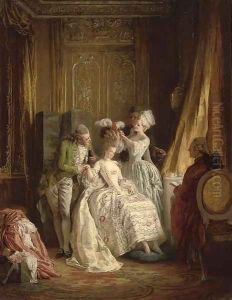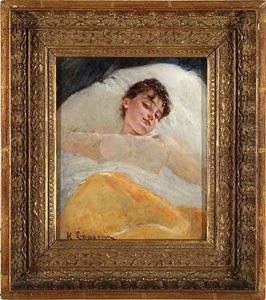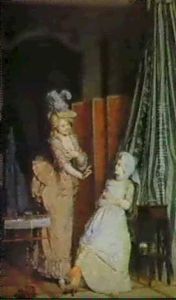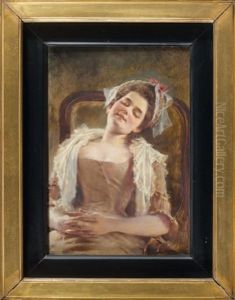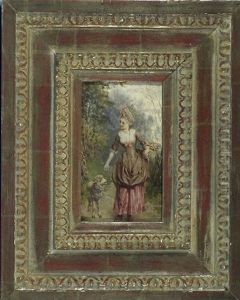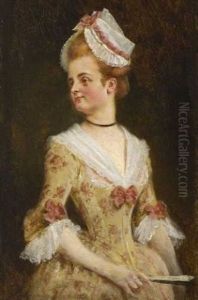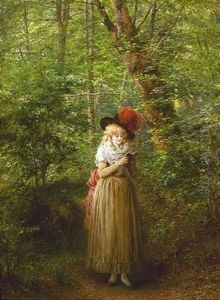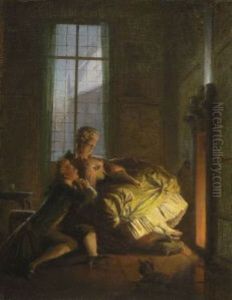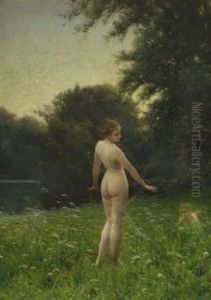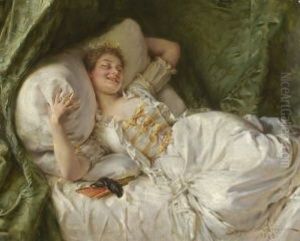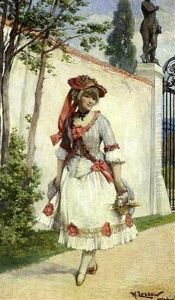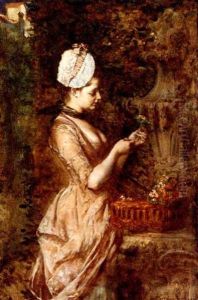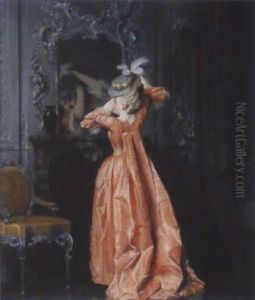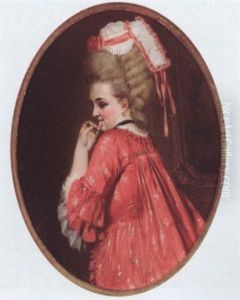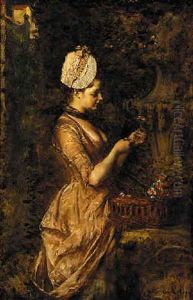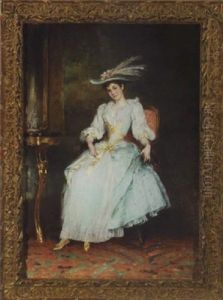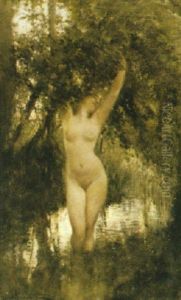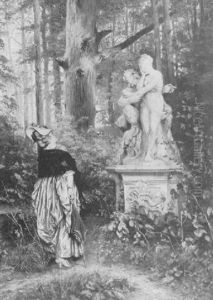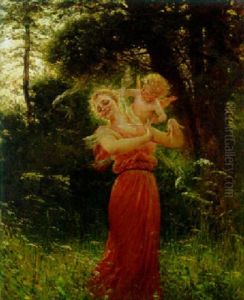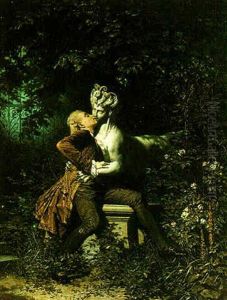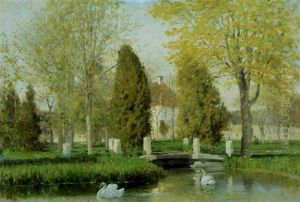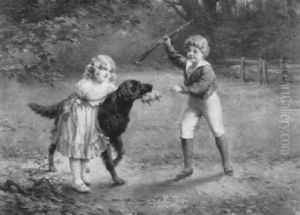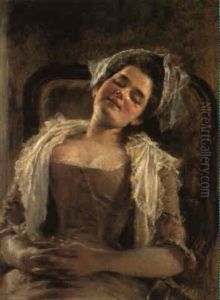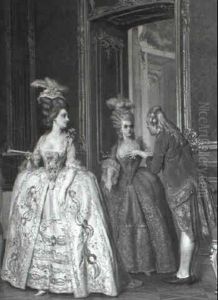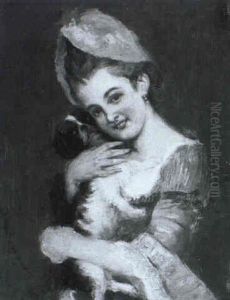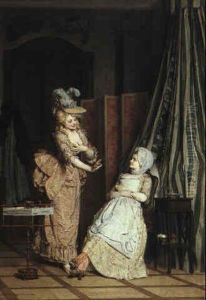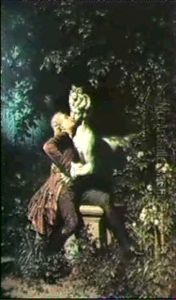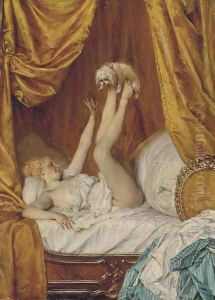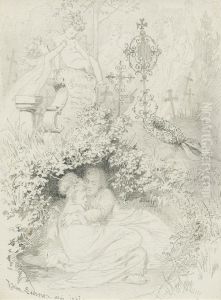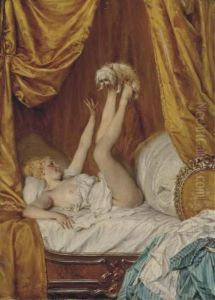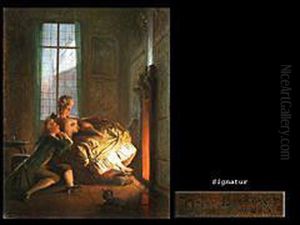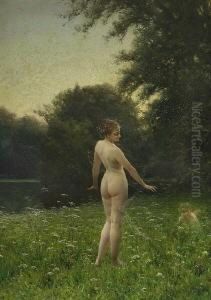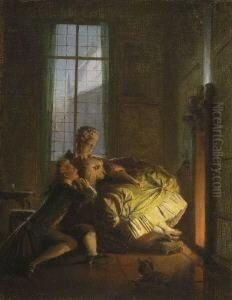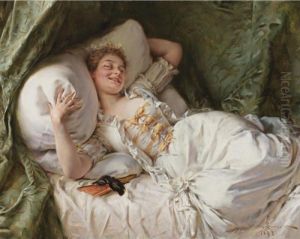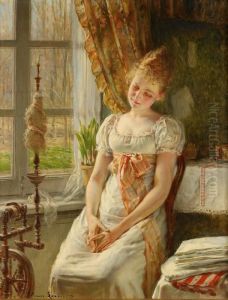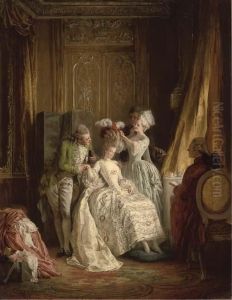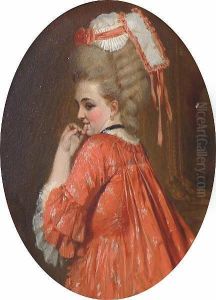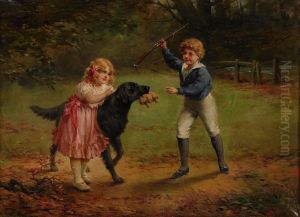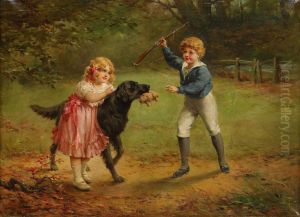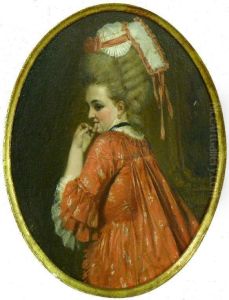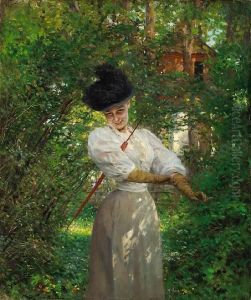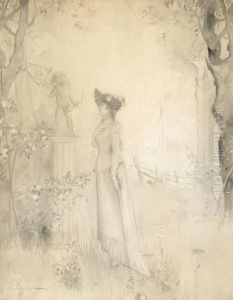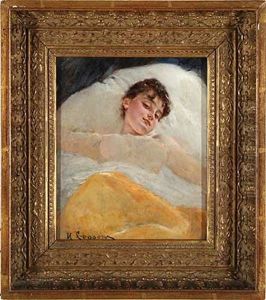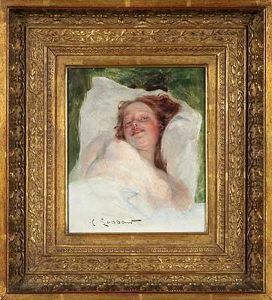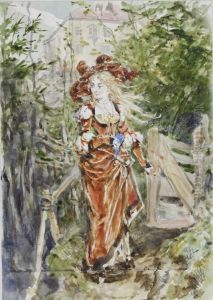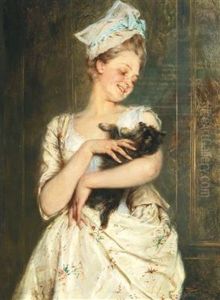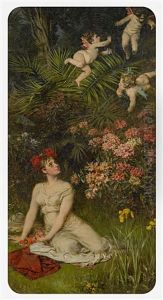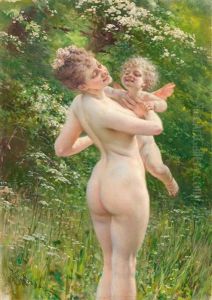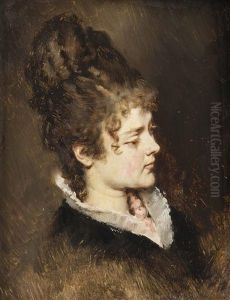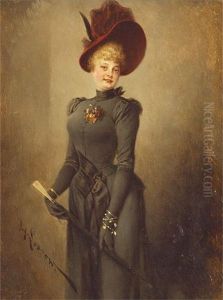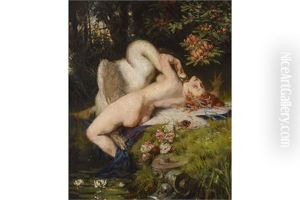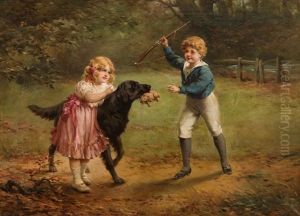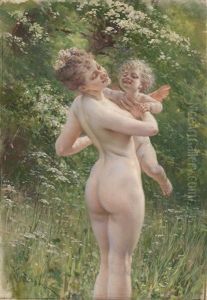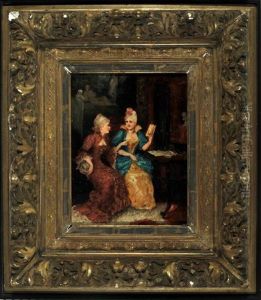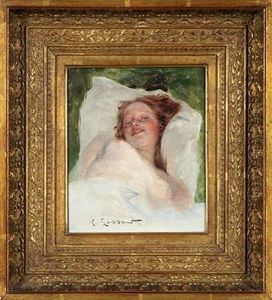Heinrich Lossow Paintings
Heinrich Lossow was a notable German painter and illustrator born on March 10, 1843, in Munich, Germany. He was the son of Arnold Hermann Lossow, a renowned sculptor, which provided him with an artistic environment from an early age. Heinrich's early exposure to the arts profoundly influenced his career path, guiding him toward painting and illustration. He studied art under his father's guidance before enrolling at the Munich Academy of Fine Arts, where he further honed his skills and developed a distinctive style.
Lossow's work is characterized by its meticulous attention to detail, vibrant color palette, and often, erotic themes. He was particularly known for his genre paintings and illustrations that vividly captured scenes of everyday life, mythology, and classical literature. His artwork often depicted sensual and sometimes controversial subjects, which both intrigued and scandalized the Victorian era's audiences.
Throughout his career, Heinrich Lossow worked for various publications, providing illustrations for books, magazines, and newspapers. He also created a number of private commissions, which allowed him to explore more personal and often risqué themes. Despite the sometimes provocative nature of his work, Lossow gained a significant following and was respected for his technical skill and artistic vision.
Lossow spent most of his life in Munich, where he was an active member of the local artistic community. He frequently participated in art exhibitions and was involved in several art organizations, contributing to the vibrant cultural life of Munich in the late 19th century.
Heinrich Lossow passed away on May 19, 1897, in Schleissheim, Germany. Although not as widely recognized today as some of his contemporaries, Lossow left behind a body of work that continues to be appreciated for its technical excellence and its bold exploration of themes. His contributions to German art and illustration during the late 19th century remain significant, offering insight into the era's cultural and social dynamics.
